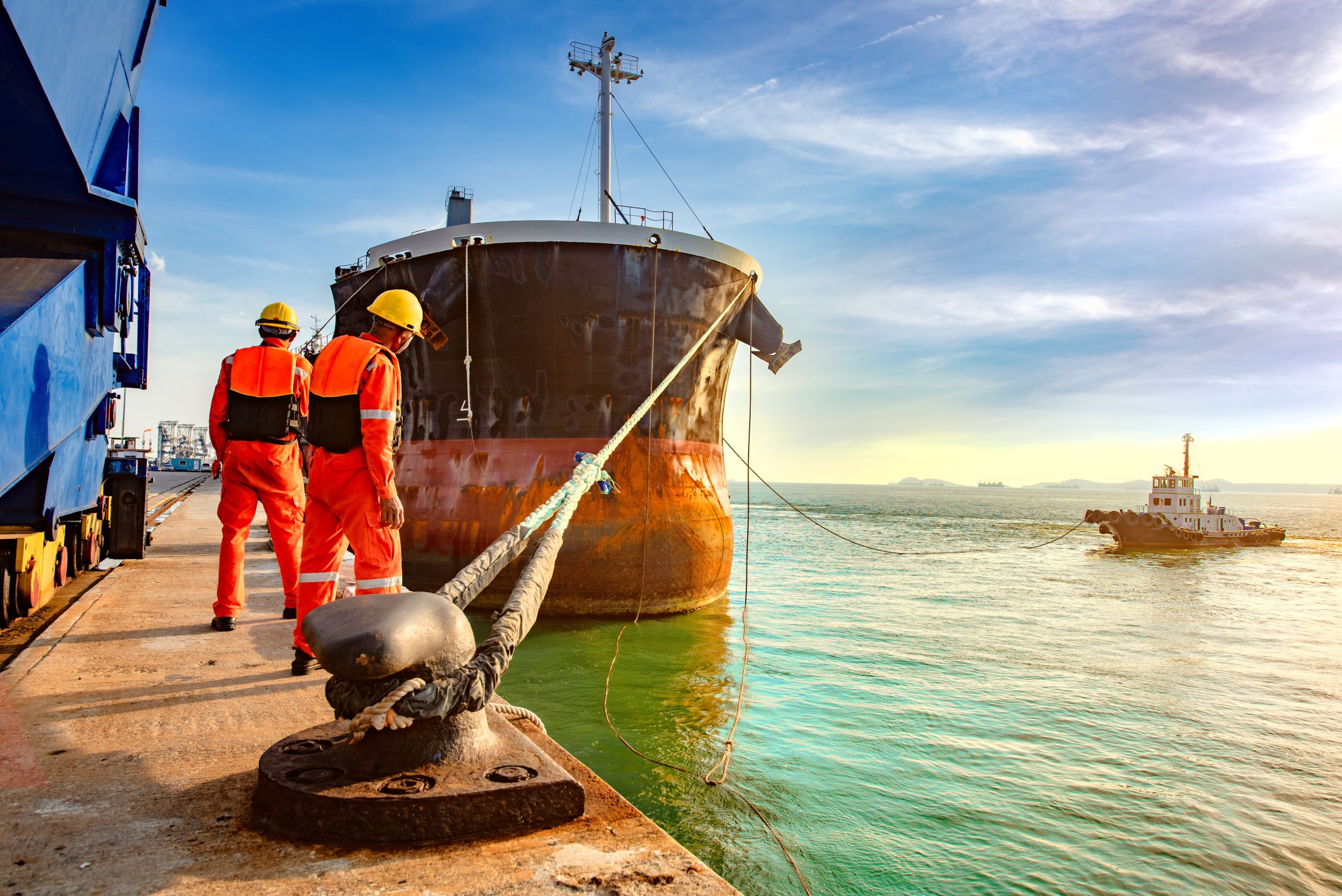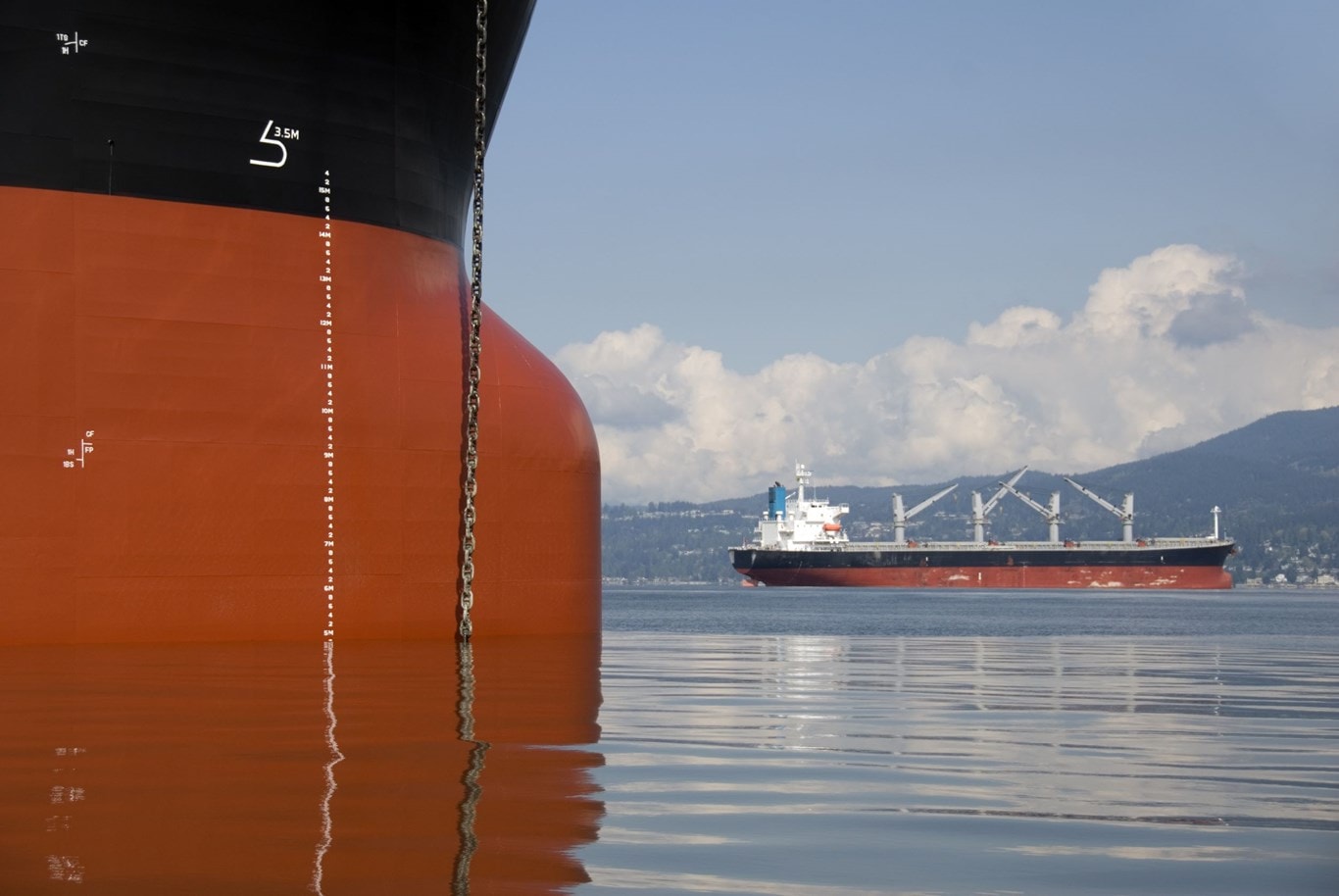
Interaction Damage to Vessels Moored Alongside
Loss Prevention Bulletin
The Club continues to encounter claims, often costly, where entered vessels are either suffering damage due to the effect of passing vessels in ports, rivers and canals, or are accused of causing damage due to passing too close and / or too fast to moored vessels.
When a vessel passes in close proximity to a moored vessel there will be hydrodynamic interaction between the two, causing the moored vessel to move at her berth, as follows:
A.

As the passing vessel approaches the interaction will generally cause the moored vessel to experience a slight surge along the berth in the direction of travel of the passing vessel.
B.

As the passing vessel starts to pass, the moored vessel will typically surge along the berth towards the passing vessel, sway away from the berth, and the end of the vessel furthest from the passing vessel will yaw towards the berth.

As the passing vessel draws level, the moored vessel will tend to strongly sway away from the berth.

As the passing vessel starts to draw clear, the moored vessel will normally surge in the direction of travel of the passing vessel, will sway towards the berth and the end of the vessel closest to the passing vessel will yaw away from the berth.
The magnitude of the hydrodynamic forces imparted in a moored vessel, causing it to surge, sway and yaw at its berth, will depend on a complex array of factors, including, but not limited to the following:
- The speed of the passing vessel, with the hydrodynamic force imparted being approximately proportional to the square of the vessel’s speed through the water.
- The passing distance, with reduced distance leading to greater hydrodynamic forces.
- The underkeel clearance and variations in depth. The smaller the underkeel clearance the greater the hydrodynamic force.
- The relative displacement of both vessels.
- The orientation of the berth to the passing vessel.
- Whether the berth is open to water on all sides such as at a sea island, or only on one side, for example at a river berth.
Moored Vessels
When interaction between a passing vessel and a moored vessel has caused the latter vessel to move at her berth, damage may typically be caused to the vessel’s accommodation ladder or gangway, as well as to mooring lines. In some cases fenders and / or the berth may be damaged. There have also been instances where the moored vessel has moved sufficiently to cause cargo hoses to part or loading arms to be damaged, leading to pollution.
To prevent hydrodynamic interaction moving a vessel at a berth, it should be properly and safely moored at all times and the moorings adjusted as necessary for change of tide as well as cargo and ballast operations. When considering any claims for damage to the moored vessel, the parties representing the passing vessel will look closely at any complicity on the part of the moored vessel in being moved at her berth by examining whether she was in all respects properly and securely moored for the prevailing circumstances and conditions.
In doing so the following
factors will be taken into account:
- The number and type of mooring lines deployed, whilst considering the prevailing conditions at the berth, expected tide and current, exposure to the elements and the volume and proximity of passing traffic.
- Whether ropes have been run from winch drums, drum ends or bitts.
- Whether the mooring line leads, both horizontally and vertically, are effective.
- Whether any ropes are overly long.
- Whether different types of mooring lines, with differing elasticity, are being used together.
- The condition of the mooring lines, including external damage (mechanical and due to actinic degradation) and internal weardown indicating hard usage.
- Whether any ropes are knotted or fitted with short splices.
- Are any eyes formed by knots, and whether all eye splices are properly made?
- Whether all winch drums are working and utilised.
- Is the vessel fitted with auto-tension winches, and if so, are these in use in auto-tension mode?
- Have all winch drum brakes been properly set-up to render in line with industry best practice? When were the winch drum brake settings last checked?
More factors to consider:
- The condition of winch drum brakes; brake banding thickness and whether the metal brake drum mating surface is free of rust and damage.
- Are winch drum brakes fully applied?
- If split winch drums are fitted, are these being used as intended?
- Whether ropes laid-up on bitts have been laid-up in accordance with accepted industry best practice.
- What is the composition of the deck watchkeeping team?
- Are mooring lines being regularly checked in accordance with the requirements of the vessel’s Safety Management System and good seamanship, being adjusted where necessary to account for change of tide as well as cargo and ballast operations, so the moorings are properly tensioned with a good sharing of load?
- Where is the accommodation ladder / gangway positioned in relation to hazards ashore, typically mooring bollards, which could be fouled if the vessel were to move?
- Did vessels either ahead or astern of the subject moored vessel at the time of the incident suffer any damage?
Vessels at a berth are therefore advised to ensure that their mooring arrangement is fit for purpose, is deployed in accordance with best mooring practice and is regularly tended to ensure the vessel remains securely alongside in position at all times. It should be remembered that once a vessel moves off a berth, the frictional resistance provided by the fendering will be lost, permitting it to more easily surge along the face of the berth.
When deploying accommodation ladders or gangways on a wharf, the proximity of fixed structures which could foul the ladder or gangway should the vessel move need to be considered. If necessary, when initially positioning the vessel when coming alongside, the vessel should be moved so that the means of access can be landed in a clear area on the wharf.
When a passing vessel causes a
moored vessel to move at her berth
with resultant damage, protest
should be lodged with the other
vessel, her agents, the terminal and
the port authority at the earliest
opportunity. VDR and ECDIS
data should also be backed-up
following the incident, as this may
show the movement of the vessel
at the material time. If damage
has been caused to the berth or to
port equipment the local P&I Club
correspondent should also
be contacted.

Passing Vessels
A vessel making way either into or out of a port or along a river or canal may be accused of having passed a moored vessel too closely and / or at too high a speed, causing the latter vessel to move unexpectedly with damage being sustained as a result. When examining whether an accused vessel has been responsible for causing a vessel at a berth to move, the following factors will be considered:
- The speed of the vessel through the water at the time of passing.
- The distance off that the moored vessel was passed.
- Was the vessel making way on the correct side of the channel?
- Whether any mandatory speed restriction and / or minimum passing distance was in place, and whether either or both were complied with.
- Whether the vessel was passing the moored vessel at the material time, or whether another vessel could have been responsible.
When a vessel receives an allegation that she is responsible for causing damage to a moored vessel due to having passed too fast and / or too close, VDR and ECDIS data should be backed-up at the earliest opportunity to assist in the examination of the circumstances of the case. The local P&I Club correspondent should also be notified.